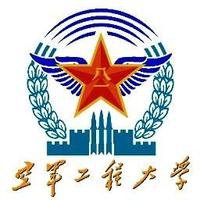Japan and China Are Working On Systems To Remove Orbital Debris With Lasers - Part 2 of 2 Parts
China Air Force Engineering University.jpg

Part 2 of 2 Parts (Please read Part 1 first)
The project to test this concept of combining EUSO and a CAN laser for space debris removal would deploy a small proof-of-concept system on the ISS. This would include a small version of the EUSO and a prototype ten-watt CAN laser that could fire at one hundred pulses per second. If the prototype system and full-scale version of this system prove successful on the ISS, then dedicated satellites bcontaining the EUSO and CAN laser can be constructed. Such satellites would travel in an orbit that would take them over both poles of the Earth. The CAN lasers on such satellites would have five hundred thousand watts of power and would fire at fifty thousand pulses per second. Estimates suggest that it could blast one piece of space junk every five minutes. This would add up to one hundred thousand pieces of space debris each year.
Most pieces of space debris occupy an orbit about five hundred miles above the Earth. A dedicated space junk removal laser equipped satellite would start in a six hundred- and twenty-miles orbit and spiral down at the rate of six miles each months. After about four years, the satellite would have removed a great deal of the most problematic space junk that was orbiting between three hundred miles above the Earth to six hundred and twenty miles.
Toshikazu Ebisuzaki is an astrophysicist and chief scientist at the RIKEN (Rikagaku Kenkyūsho) Computational Astrophysics Laboratory in Wako, Japan. He is working on the EUSO project. He said, “We may finally have a way to stop the headache of rapidly growing space debris that endangers space activities. The biggest obstacle is funding. There are some technical challenges, of course, but the main issue is getting funding for development and launch.”
A new paper has just been published in Optik - International Journal for Light and Electron Optics from the Air Force Engineering University in China that suggests that lasers mounted on satellites could blast the tiny pieces of debris out of orbit. The key piece of the research for this project was the running of multiple computer simulations of how radiation pressure from lasers could affect the orbital path of the tiny debris. The basic idea is to move the debris to lower orbits that would result in burn-up as it enters the atmosphere. This would occur if the debris could be lowered to about one hundred and twenty miles above the surface of the Earth.
There is an orbital measurement called inclination. This measurement describes the angle between the plane of an orbit and the plane of the equator of the Earth. Another orbital measurement is called the right ascension of ascending node (RAAN). This measurement describes the angle between the constellation Aries and a satellite as it crosses above the equator travelling from the Southern hemisphere to the Northern hemisphere. The computer models indicated that the best results for removal of small-scale of debris from orbit are obtained when the RAAN of the satellite laser station has the same RANN of the debris.
It is appropriate that China be at the forefront of orbital debris removal because China is one of the worst offenders when it comes to the creation of orbital junk. The most severe fragmentation of space junk in the history of space missions was caused by a Chinese anti-satellite missile test. That test strewed thousands of new pieces of junk into low Earth orbit. It is possible that a piece of this new debris damaged a Russian spacecraft in 2013.